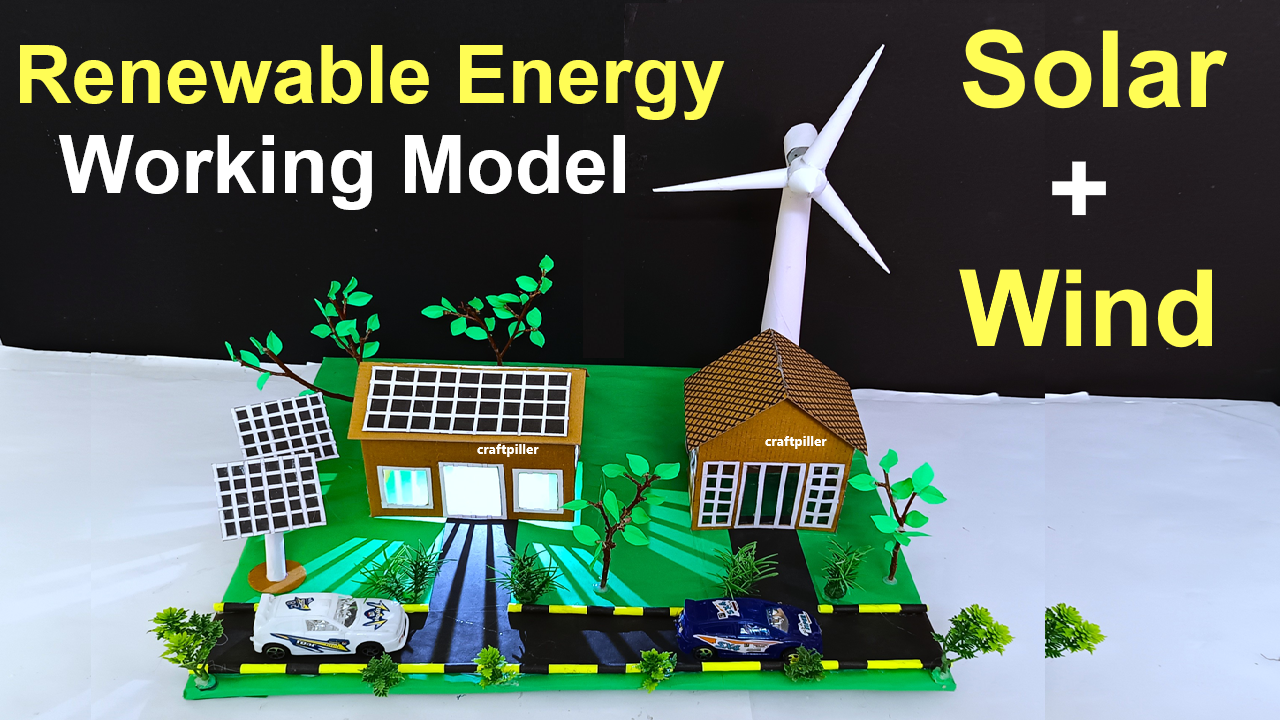Introduction
Our planet is facing serious energy challenges. The overuse of fossil fuels such as coal, oil, and natural gas has led to pollution, climate change, and depletion of natural resources.

Students, teachers, and scientists are now focusing on “planet-safe” or eco-friendly energy sources that do not harm the environment. Working models of such energy systems are excellent for science exhibitions, Inspire Award projects, and classroom demonstrations.
A planet-safe energy working model means a simple, hands-on project that shows how renewable energy can be produced, stored, or used in a sustainable way. These models are not only educational but also inspire us to think about practical solutions for the future.
Why Planet-Safe Energy?
- Protecting the Environment – Renewable energy does not release harmful greenhouse gases.
- Saving Resources – Solar, wind, and hydro energy are renewable and never run out.
- Affordable in the Long Term – Initial cost may be high, but running cost is very low.
- Student Awareness – Building such models helps young learners understand how technology can solve real-world problems.
Popular Planet-Safe Energy Working Models
1. Solar Energy Models
Solar energy is one of the cleanest forms of power. Models can show how sunlight can be converted into electricity or heat.
- Solar Fan Model
- Materials: Small solar panel, DC motor, fan blade.
- Working: Sunlight hits the panel, producing current that rotates the fan.
- Educational Value: Shows direct conversion of solar power into mechanical energy.
- Solar Water Heater Model
- Materials: Black painted bottle or pipe, transparent sheet, water.
- Working: Water absorbs solar heat and becomes warm.
- Educational Value: Explains how households can save energy with solar heaters.
2. Wind Energy Models
Wind turbines convert wind into electricity. Students can create small versions with cardboard blades and a motor.
- Wind Turbine LED Model
- Materials: DC motor, LED, cardboard blades, stand.
- Working: Blowing air rotates blades, motor generates electricity, LED glows.
- Educational Value: Explains wind farms and renewable electricity production.
3. Hydropower Models
Flowing water can generate electricity without pollution.
- Mini Hydro Turbine Model
- Materials: Plastic bottle, small turbine wheel, DC motor, LED.
- Working: Water flow spins the turbine, producing electricity.
- Educational Value: Demonstrates how dams and rivers are used for clean energy.
4. Biogas Plant Models
Biogas is produced when organic waste decomposes in the absence of oxygen.
- Biogas Digester Model
- Materials: Plastic bottle, inlet for waste, outlet pipe for gas, water container.
- Working: Waste is fed inside, sealed, and after decomposition, gas is collected and shown as bubbles.
- Educational Value: Teaches waste-to-energy conversion and rural energy solutions.
5. Hybrid Energy Models
Hybrid models combine two or more renewable sources.
- Solar + Wind Hybrid Model
- Materials: Solar panel, DC motor with blades, battery, LED.
- Working: Both solar panel and wind turbine charge the battery, which powers LED.
- Educational Value: Shows reliability of using multiple planet-safe sources together.
6. Energy from Waste Models
Waste materials can be used to generate energy, promoting recycling and sustainability.
- Thermal Waste-to-Energy Model
- Materials: Small can, candle/heat source, turbine fan.
- Working: Heat from waste burning rotates turbine, demonstrating energy conversion.
- Educational Value: Shows how urban waste can be used to reduce landfill pressure.
Future Possibilities of Planet-Safe Energy
Planet-safe models are not just for exhibitions. They inspire real solutions:
- Solar-powered schools and homes can reduce electricity bills.
- Wind farms in coastal and hilly areas can supply entire cities.
- Biogas plants can replace LPG in villages.
- Hydropower micro-grids can support remote villages without electricity.
- Hybrid energy systems can provide 24/7 power in rural and urban areas.
The knowledge students gain from working on these models can later lead to careers in green technology, engineering, and environmental science.
Conclusion
Planet-safe energy working models are more than just school projects; they are small steps toward solving the world’s energy crisis. By experimenting with solar panels, wind turbines, hydro plants, and biogas digesters, students not only learn science but also develop an eco-friendly mindset.
These models remind us that protecting the planet is not only the responsibility of governments and scientists but also of students, teachers, and communities. Every simple model built today can spark an idea that changes tomorrow.
As the demand for clean energy grows, young innovators and learners must continue to design, test, and improve planet-safe energy solutions. After all, the future of the Earth depends on the energy choices we make today.

